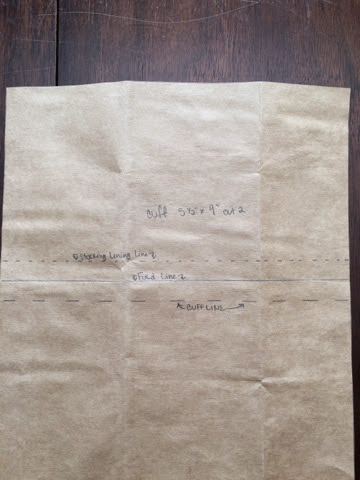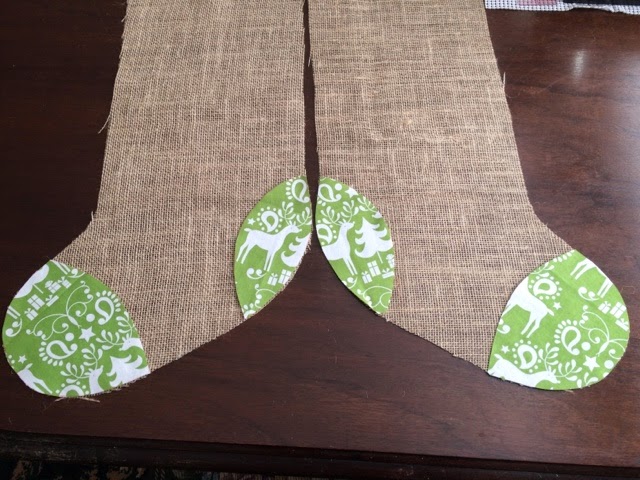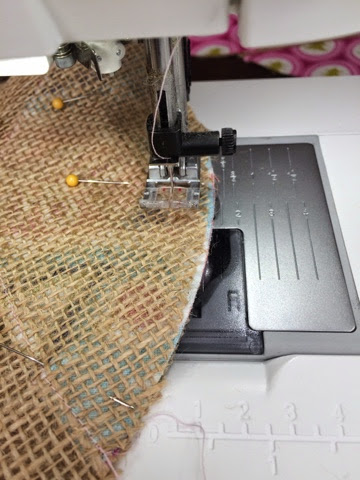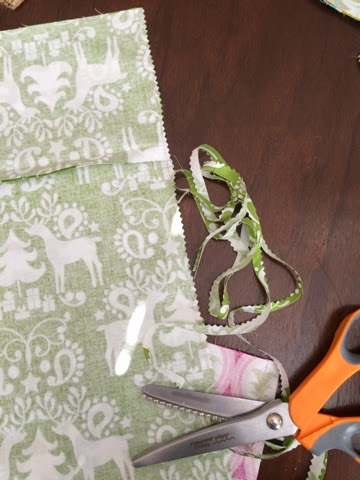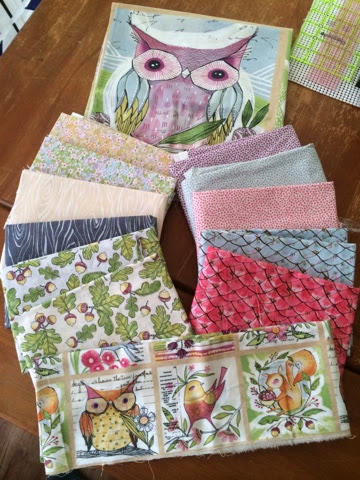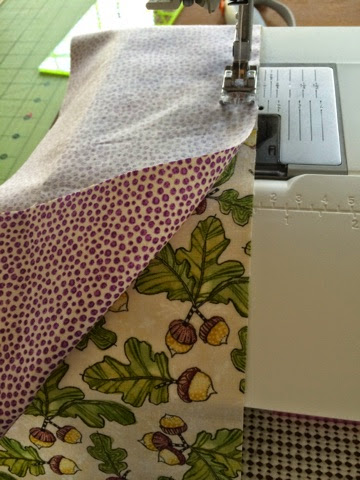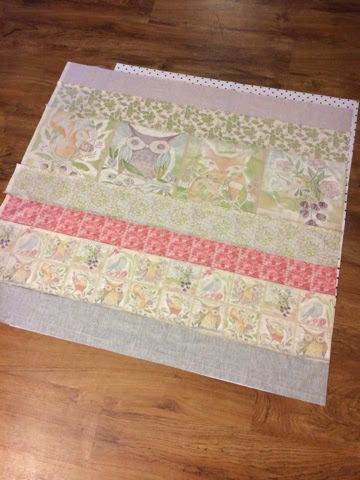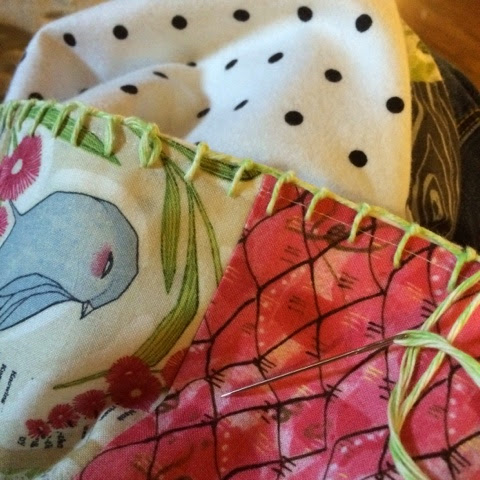{Treelicious by Maude Asbury
for Blend Fabrics}
What a fun collection by Maude Asbury! It's classic, yet funky and modern. Perfect for my family's Christmas stockings! As you know, our belongings are locked up safe in a storage unit clear across the country. Last Christmas we were at my husband's parents house for Christmas so things like a tree, ornaments, and Christmas stockings were not a concern. Not this year! This year we're at our own place without our decorations. What else could I do but make our stockings, right?
This is a tutorial for inexpensive, yet pretty, Christmas stockings. I'll even show you how to draw your own pattern so you don't have to rely on having a printer (with ink!) in order to get started.
Ready? Gather your supplies. For three stockings I used:
1 yard burlap
3 different 1/2 yard pieces of quilting cotton
Pinking shears (optional)
Grid ruler, pencil, paper bag, round plate, paper scissors
First, cut the bottom off the bag and remove the handles, if any:
Flip the bag over and cut down the seam line, then fold bag in half with the printed side inside the fold:
My grid ruler is 18", so that's about how long I drew my line. This line represents the heel side of the stocking from top to heel:
Measure over about 8"-9" and draw a second line, parallel to the first and the same length.
You can see in the photo below that I drew the heel and toe outside of these two lines. For the toe, it starts about 10" down, the heel about 9". The widest part of the toe (from straight line to curved line) is 3"; the heel is about 1/2" from straight line to curve. The point where the curved line starts to the bottom of the toe is about 7". I completely "eyeballed" it and just drew this part freehand. You can use a round edged plate to make the curve if you want.
Next, cut the stocking pattern out. To make the cuff, measure down 5 1/2" and draw a line across the top of the stocking pattern at that point; draw a line 1/2" above and below this line to indicate where you should cut for the stocking and lining. The original line becomes the fold which is also the seam of the cuff/lining. (See below, the second photo down...)
Trace the foot portion of the stocking pattern onto an empty piece of the bag. Draw the curved lines for the heel and toe; be sure to label them "bottom of toe, stocking inside line, stocking outside etc" I didn't do that and I wished I had. It was a little confusing to match it all up because my curved edges were so similar.
Cut the heel and toe patterns out, and draw the rectangle cuff pattern piece: 5 1/2"xthe width of your stocking top:
{for burlap, fold the pattern on the fold line to trace. For the lining, fold it on the stocking lining line.}
Now you're ready to trace your pattern pieces onto the burlap and quilting cotton, aka "lining".
From Burlap:
Cut 2 stockings
From Lining Cut:
2 stockings
2 heels
2 toes
2 cuffs
Lay the wrong side of the toe and heel pieces to the right side of the burlap
matching raw edges; pin in place and stitch using a 1/8" seam allowance. (These pieces purposely have raw edges and are not turned under.)
Place burlap stocking halves right sides together; stitch using a 1/2" seam allowance.
Clip curves or use pinking shears. I only clipped the foot part of the stocking:
Turn burlap stocking right side out; press.
With right sides together, place one cuff piece to the top of one stocking piece. Make sure if the fabric you are using is directional, that it will be facing the correct way when folded down.
Repeat this process for both stocking/cuff pieces; press cuff seam towards top of stocking. Press edge of cuff under 1/2".
Lay the stockings right sides together, matching curves and cuff seams; stitch using 1/2" seam allowance. Clip corners it use pinking shears on the foot area.
Insert the lining into the burlap stockingFold cuff over raw edge of the burlap; pin in place. Using your machines free arm, carefully topstitch around the cuff using a 1/4" seam allowance.
Press the topstitched seam and you are done!
I hope my instructions were clear. I made these about 2 weeks ago so I'm working from memory. If you have any questions, please submit them via the "contact me" page and I will answer them as soon as possible.
Happy sewing!
-Kristi-










